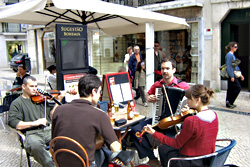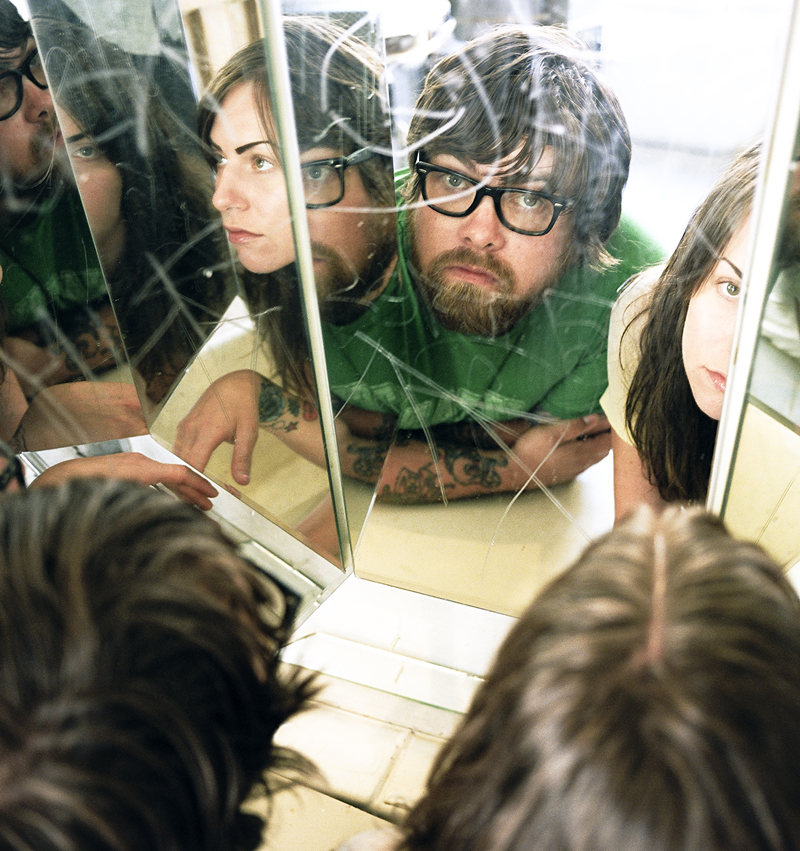You all might’ve heard of a little band called Beirut, the vision of New Mexico wunderkind Zach Condon, whose debut album, Gulag Orkestar, was extraordinarily well received by music critics. But the media was so busy showering plaudits on Condon’s youthful bedroom recording, they overlooked ex–Neutral Milk Hotel drummer (and fellow New Mexican) Jeremy Barnes’ Balkan folk project, A Hawk and a Hacksaw—even though Barnes and his bandmate Heather Trost not only helped record Gulag Orkestar, but were partially responsible for Beirut’s success, as Barnes gave an early version of the album to Ba Da Bing! Records label head Ben Goldberg (who promptly signed Condon). Gulag Orkestar hit the shelves on May 9, 2006, six months before A Hawk and a Hacksaw’s third record, The Way the Wind Blows. And though the record was initially eclipsed by the success of Condon’s similarly minded efforts, now that Condon seems to have moved on to poppier, French-cafe ditties, A Hawk and a Hacksaw might just get the attention it deserves.
A Hawk and a Hacksaw began as a more experimental institution. Barnes recorded his self-titled debut with members of the Elephant Six collective in France under the name ” A Hawk and a Hacksaw” (a misquoted phrase from the novel Don Quixote that actually reads “handsaw”). The album was probably Barnes’ most conceptual recording, on which he juxtaposed a variety of melodic instruments with sounds like dogs barking and the clang of pots and pans. And though it’s possible to detect the Eastern European influence on that record, it was not until Barnes moved to Leicester, England, that he would find his musical calling. In Leicester, Barnes worked as a postman, volunteering on Sundays at a local refugee center that hosted a sizable number of Eastern European immigrants.
Soon afterward, Barnes hung up his postal uniform and traveled to Prague, where he composed Darkness at Noon, an album that incorporated more traditional klezmer and gypsy folk than experimental soundplay. It was Barnes’ first release on the Leaf Label (which in 2004 re-released the 2002 self-titled record). He then came back to Albuquerque, where he met a kindred spirit: Trost, a violinist who shared Barnes’ passion for Balkan, particularly Romanian, music. Together, they helped Condon record Gulag Orkestar, and he lent his talents to The Way the Wind Blows in kind.
But although Beirut’s since moved on to experiment with other genres—Condon’s second record, The Flying Club Cup, is more French cafe pop than gypsy folk— A Hawk and a Hacksaw keeps releasing work that, rather than becoming more experimental, delves deeper into different Eastern European, gypsy, and Jewish folk traditions. Barnes recorded part of The Way the Wind Blows in a remote Romanian village with a renowned Balkan folk group, Fanfare Ciocarlia. And in October 2007, one year after that record’s release, he returned to Eastern Europe with Trost—to Budapest, where they formed a band of Hungarian musicians (all of whom frequented the same music shop, Fonó) called the Hun Hangár Ensemble. Together they recorded a limited-edition (4,000 copies) EP called A Hawk and a Hacksaw and the Hun Hangár Ensemble. The album is actually the precursor to a forthcoming full-length collaboration with the Hun Hangár Ensemble, and it comes with a DVD that documents the past two years of A Hawk and a Hacksaw’s near-constant touring.
Unlike the group’s previous records, A Hawk and a Hacksaw and the Hun Hangár Ensemble dispenses with vocals entirely (though they were sparse to begin with) in favor of moody instrumentals that conjure the narrow cobblestone streets and gypsy caravans of the Old World. Only the first two tracks are original compositions; the rest are arrangements of traditional pieces. Meant to highlight each musician as an individual, not just as cogs in a greater machine, some of the songs are solo pieces. “Vajdaszentivány,” the album’s sixth track, is a solo for cimbalom (a stringed instrument prevalent in klezmer and Eastern European folk music), performed by Balázs Unger. On the other hand, on “Dudanotak,” the album’s grand finale, the Hungarian bagpipes are the featured instrument, played by Béla Ágoston. While it’s not the sort of record that usually makes it into the top 10 on college-radio request lists, let alone on Billboard, A Hawk and a Hacksaw and the Hun Hangár Ensemble resurrects a bygone era in a language that an audience of 21st-century 20-somethings can understand.






